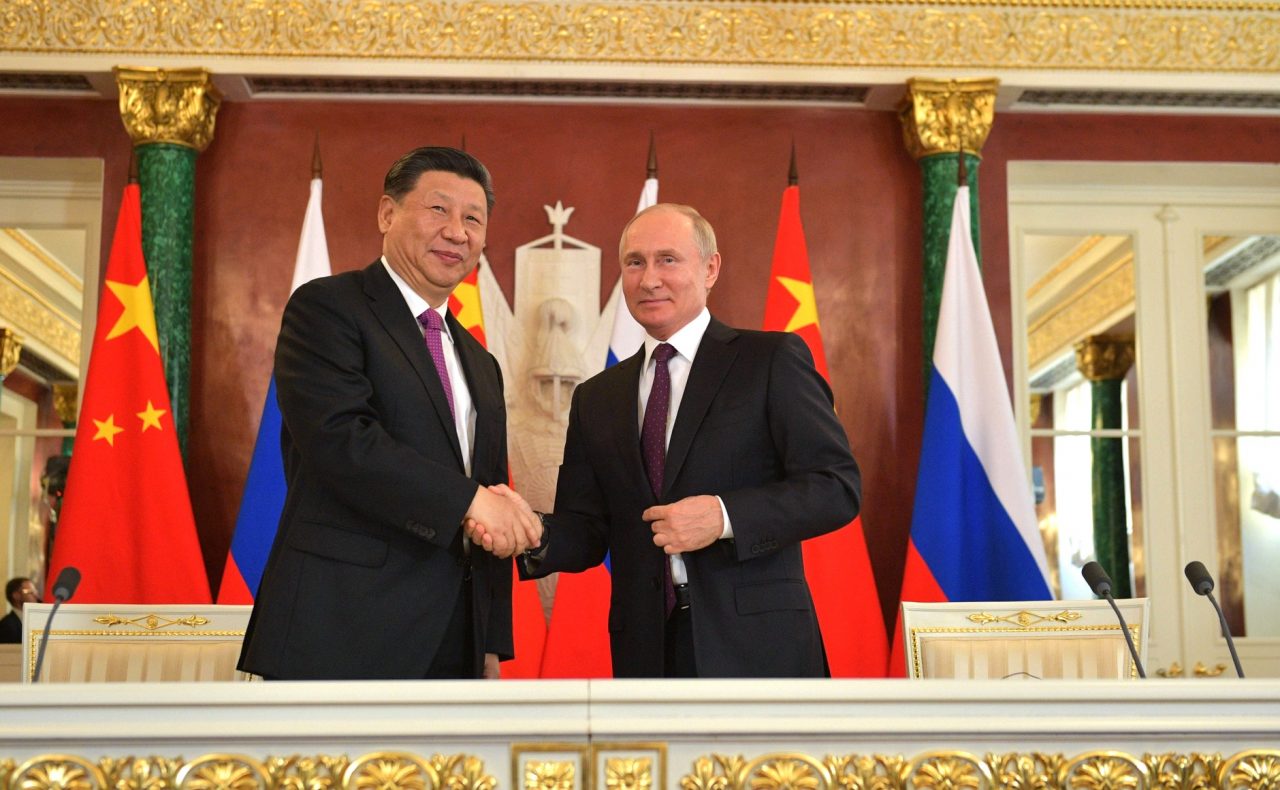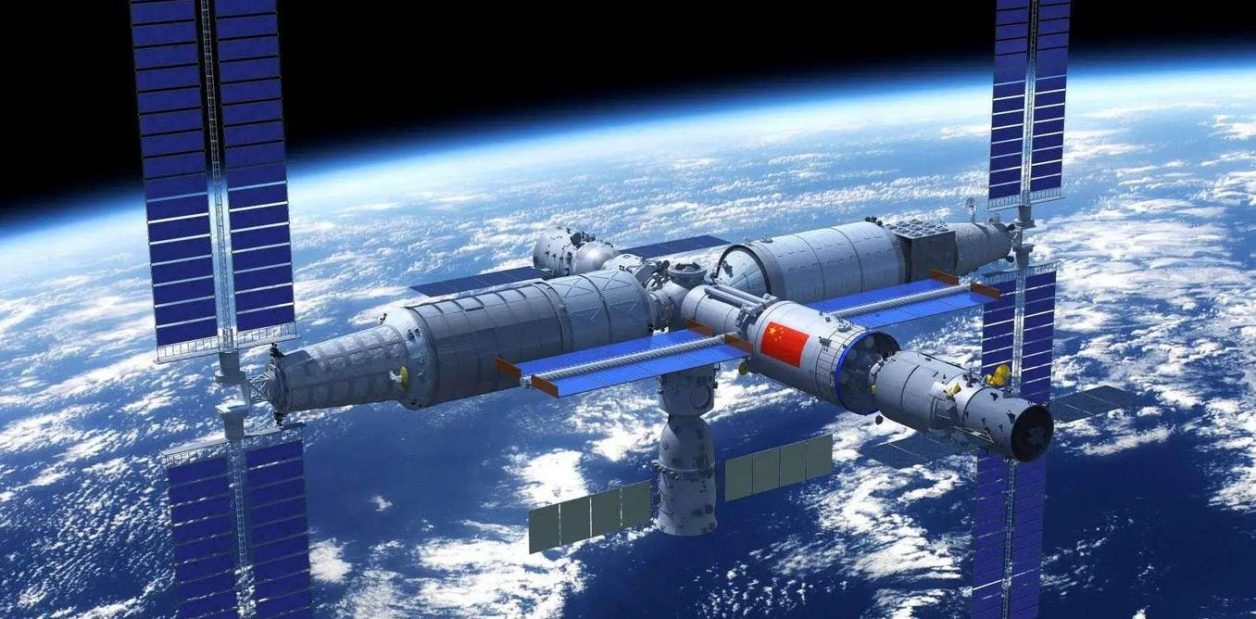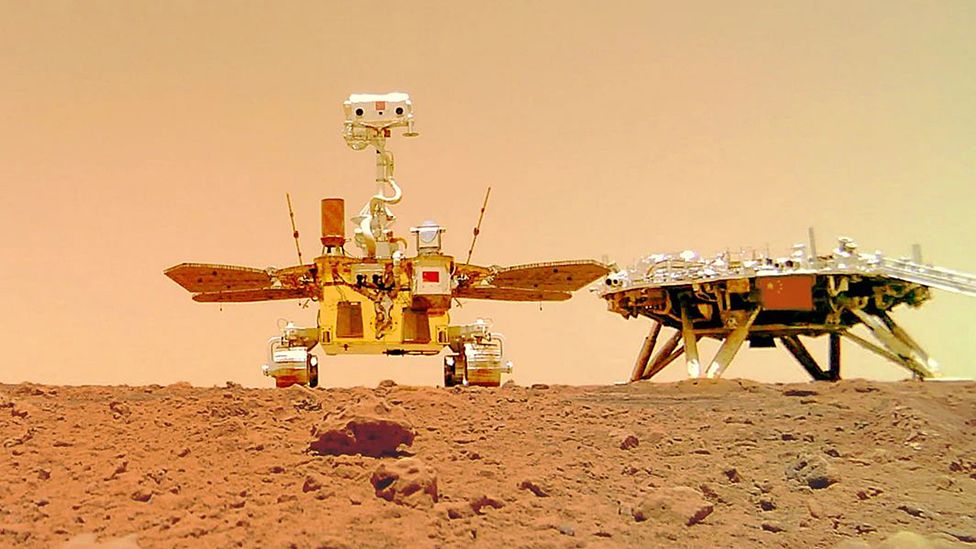Natural resources in space worth billions or even trillions of dollars are poised to be the subject of contention between the US and China. Both superpowers are aggressively vying for space dominance and at the center of this rivalry is the ongoing race for mining the Moon for valuable minerals.
Advantage Super Hornets: Is Boeing’s ‘Maverick Marketing’ Helping F-18 Jets Overcome Rafale Challenge For Indian Navy Deal?
The race is almost reminiscent of the cold war era of Sputnik and Apollo when the US and the Soviet Union (USSR) dominated space activities as an extension of their geopolitical rivalry on the ground.
Despite all the tensions, the US and USSR were able to work out a common set of rules at the UN and even cooperated on several space projects. However, the US and China cannot even agree on basic principles to govern the next generation of space activity.
Space Blocks In The Post-Cold War Era
In the post-Cold War period, countries having shared interests on the ground began forming ‘space blocs’ to pursue specific mission objectives, such as the African Space Agency, with 55 member states, and the Latin American and Caribbean Space Agency, with seven member states and the Arab Space Coordination Group with 12 Middle Eastern member states.
These groups enable the nations to collaborate closely with others in their bloc. However, the blocs also compete with one another. Two recent space blocs – the Artemis Accords and the Sino-Russian lunar agreement are examples of such competition.
Opt Between ‘Old Wine Or New Shotgun’; China, Russia Mock US With New Military Drills With Nuke Bombers
The Artemis Accords was launched in October 2020 and currently includes 19 countries, with four of them – Romania, Colombia, Bahrain, and Singapore – signing up after President Putin decided to invade Ukraine.
Underscoring the divide, Ukraine was an early Artemis club member after President Volodymyr Zelenskiy’s government signed in late 2020.
The group aims to send a manned mission to Moon by 2025 and establish a governing framework for exploring and mining on the Moon, Mars, and beyond. The mission intends to build a research station on the south pole of the Moon with a supporting lunar space station called the Gateway.

The Artemis Accords is part of an effort by the Biden administration to establish “a broader and comprehensive set of norms” for space, Vice President Kamala Harris said in an April 18 speech at Vandenberg Space Force Base, about 250 kilometers northwest of Los Angeles.
“As we move forward, we will remain focused on writing new rules of the road to ensure all space activities are conducted in a responsible, peaceful, and sustainable manner,” she said. “The United States is committed to lead the way and to lead by example.”
Meanwhile, China and Russia are jointly promoting an alternative project on the Moon called the International Lunar Research Station. This joint Sino-Russian mission aims to build a Moon base and install a space station in the lunar orbit.
Both Russia and China are leading the opposition to the Artemis Accords, and they have vowed greater space cooperation in early February as part of a ‘no limits’ partnership when President Putin visited President Xi Jinping in Beijing shortly before Russia invaded Ukraine.

China’s Suspicious Over US-Led Artemis Accords
One of the main issues for China is the provision in the Artemis Accords that allows nations to designate areas of the Moon as “safety zones” — regions on the lunar surface that others should avoid.
For the US and its Artemis partners, these exclusive areas are a way to comply with obligations under the Outer Space Treaty, which requires countries to avoid “harmful interference” in space. However, China views them as a thinly disguised land grab attempt that violates international law.
“It’s time the US woke up and smelled the coffee,” the official China Daily proclaimed in a January editorial that criticized how NASA “invented” the concept of safe zones to allow governments or companies to reserve areas of the Moon. “The world is no longer interested in its divisive, hegemonic schemes.”

China wants any rule-making to be settled at the UN, where it can count on support from a larger group of countries that desire friendly ties with the world’s second-biggest economy.
Beijing’s suspicions are understandable as the US Congress passed legislation in 2011 prohibiting NASA from interactions with its Chinese counterpart. The US even banned China from taking part in the International Space Station.
This move prompted Beijing to build its very own Tiangong space station, which is slated to be completed this year, making China the only country to operate its space station.
China became the first country to send a probe to the far side of the Moon in 2019, and last year it became only the second nation after the US to land a rover on Mars.

When making a case for the Artemis program in May 2020, Bill Nelson, the NASA administrator, displayed a picture of China’s Mars rover at the House appropriations committee while noting: “They’re going to be landing humans on the Moon. That should tell us something about our need to get off our duff and get our Human Landing System program going vigorously.”
Abundance Of Helium-3 On Moon
China released a white paper on its Space Program in January, according to which it plans to launch a robotic lunar mission around 2025. The Chief Designer of China’s first lunar probe, Ye Peijian said that China may be able to send astronauts to the Moon for the first time by 2030.
Moon is believed to contain large amounts of Helium-3, an isotope potentially useful as an alternative to uranium for nuclear power plants because it is not radioactive.
Helium-3 is emitted by the Sun, which is carried by the solar winds throughout the solar system but is repelled by the Earth’s strong magnetic field, with only a tiny amount penetrating the atmosphere.
Whereas on the Moon, where the magnetic field is weak and the atmosphere is extremely thin, Helium-3 is deposited in significant quantities, making it 100 times more abundant on Moon than on Earth.
Fusion reactor technology itself has been stuck with various obstacles for decades, but some argue that a significant supply of Helium-3 could be the needed game-changer.
The Chinese state-owned CGTN said in 2019 that the Moon is “sometimes referred to as the Persian Gulf of the solar system,” with experts believing 5,000 tons of coal could be replaced by about three tablespoons of Helium-3.
In an interview with the BBC in 2013, top Chinese scientist Ouyang Ziyuan estimated the Moon’s Helium-3 resources could solve humans’ energy demand for around 10,000 years at least.
Apart from that, the CGTN also noted the presence of other natural resources like rare earth elements, titanium, and uranium. Chinese researchers are already exploring the moon rocks that were brought back to Earth in late 2020 by one of China’s lunar missions.
“Outer space holds virtually limitless amounts of energy and raw materials, from Helium-3 fuel on the Moon for clean fusion reactors to heavy metals and volatile gases from asteroids, which can be harvested for use on Earth and in space,” former CIA space analyst Tim Chrisman told the Jerusalem Post in November 2021.
Chrisman thinks that China will use any resources it can acquire to the “detriment of its adversaries, competitors, and bystanders alike.” He likened the Sino-American race for lunar and asteroid mining to the race between the US and Soviet Union to launch ‘the first satellite’ during the height of the cold war.
That said, the US appears to be ahead for now in winning over nations to its interpretation of rules for operating in space. As the Artemis Accords gain new signatories, China and Russia are looking to add more nations to their block.
In March, the Chinese state media reported that negotiations were underway with the European Space Agency (ESA), Thailand, the UAE, and Saudi Arabia about taking part in the rival moon base; however, the chances are that the ongoing Russia-Ukraine war will probably make the project much less appealing to some nations.
As the Eurasian Times reported in March, the ESA has already suspended a plan to send a Russian-made lander to Mars in September or October after a UK-based satellite operator, OneWeb Ltd, canceled the plans to launch its low-Earth orbit satellites aboard Russian rockets.
- Written by Tanmay Kadam/EurAsian Times Desk
- Contact the author at etdesk@eurasiantimes.com
- Follow EurAsian Times on Google News




